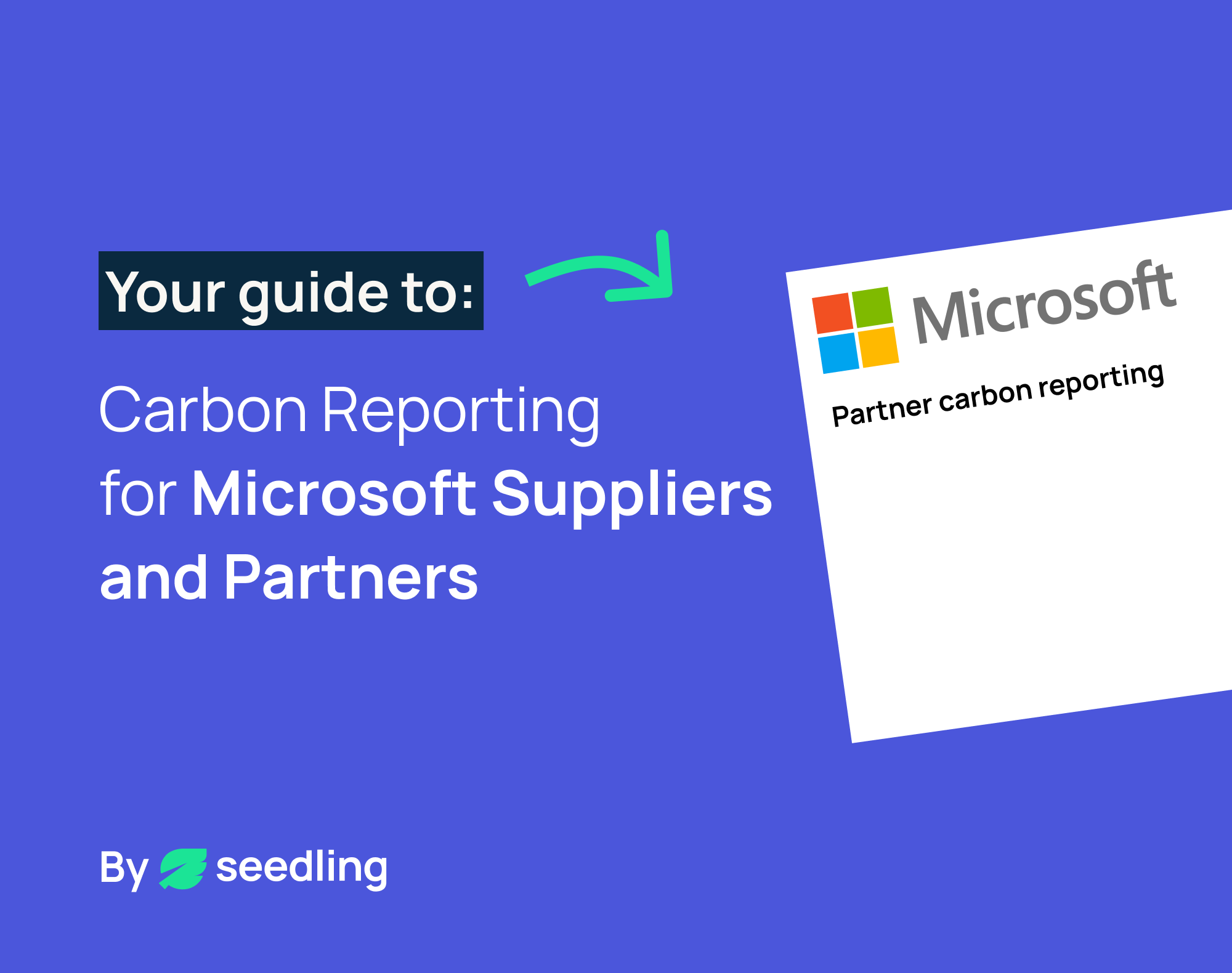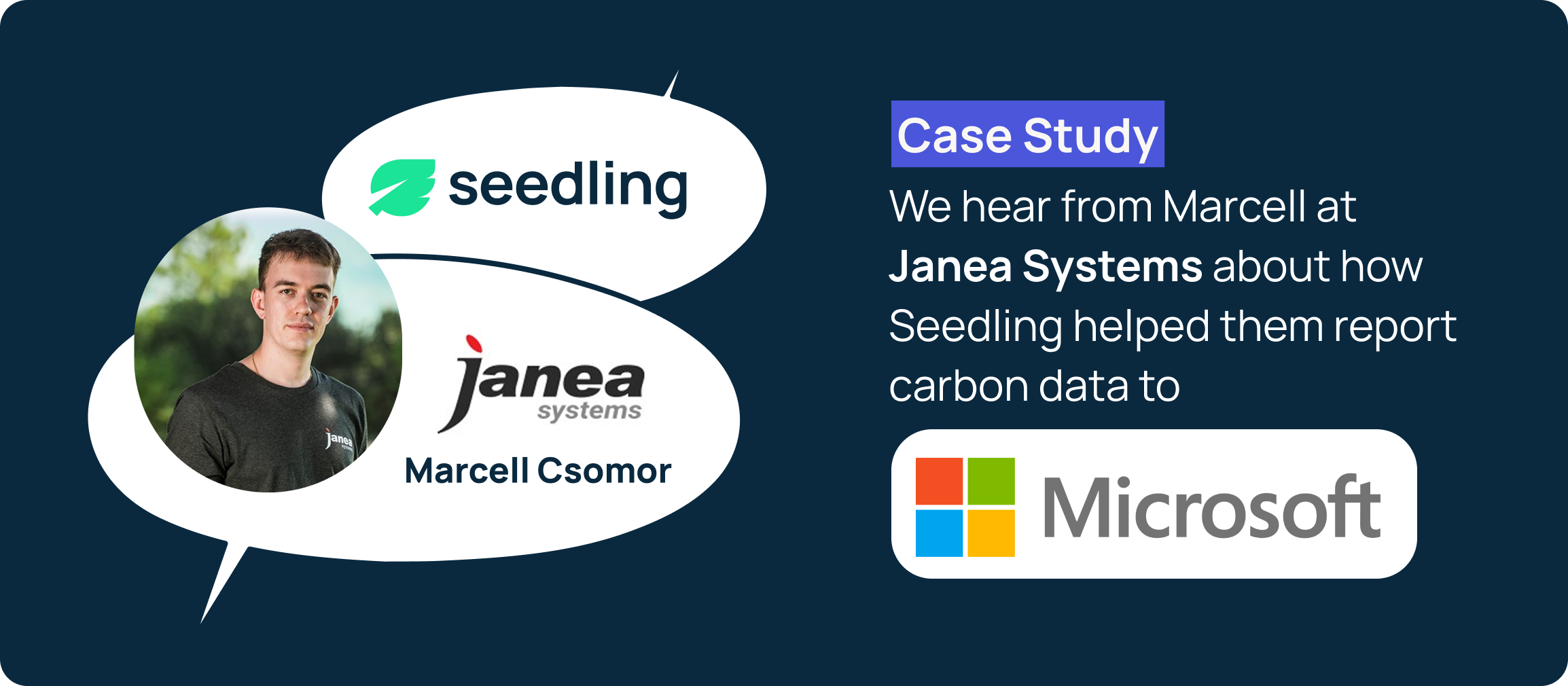Microsoft Supplier Sustainability Disclosure: How to Measure Service-Level Accounting Emissions

Microsoft’s climate ambitions are well known: carbon negative by 2030, with a stronger push on supply chain emissions because that’s where most of the impact sits. The 2025 disclosure cycle turns that ambition into firmer supplier requirements: higher-quality data, service-level granularity, and independent checks over what you report. If you sell services to Microsoft, this is the standard to meet.
Who needs to measure service-level emissions?
Microsoft’s updated approach applies to key suppliers delivering services. You’ll be asked for two disclosures. First, your total organisational footprint. Second, a service-level view that isolates the emissions associated with what you deliver to Microsoft. The aim is simple: understand the carbon cost of the service purchased, not just your total footprint.
How to comply
Start with a full-scope inventory aligned to the GHG Protocol, the gold-standard for carbon accounting. That means measuring:
- Scope 1 (direct emissions)
- Scope 2 (indirect emissions from energy)
- Scope 3, upstream only (categories 1 to 8).
Read more about the Scopes and what's included here.
Each category must be disclosed, even if zero or immaterial. This is the baseline for all in-scope suppliers in 2025.
Then add service-level accounting. Choose a sensible reference unit that reflects delivery - e.g. hours worked, FTEs, or a similar unit -and report the volume delivered in the period. For each service, provide the associated emissions split by scope and category, and include the UNSPSC code so Microsoft can classify it consistently. Expect to document your allocation logic so an external reviewer can follow it.
Verification in 2025
Independent third-party verification is now mandatory for the historic baseline year (typically 2019 or an approved alternative) and for 2024 data. You can meet the requirement in one of two ways.
One route is an Assurance Letter from an independent practitioner. It must list numerical values for Scopes 1, 2, and Scope 3 Categories 1–8 - by service for the SLA view - and confirm any categories that are zero or immaterial. It must state the reporting period, the criteria used for calculations (for example, GHG Protocol), and the level of assurance. Microsoft requires limited assurance. Accepted assurance standards include PCAOB, AICPA, and IAASB. The letter must be 1–3 pages, on provider letterhead, and in English.
The other route is a Consultant Letter from a qualified external consultant who performs the calculations. Software alone doesn’t count, though software can be used alongside a consultant. The consultant must use Microsoft’s template, include the same scope and category detail (again, by service for SLA), the reference unit and volume, the UNSPSC code, and a short description of how the SLA calculation was performed.
Microsoft frames these requirements in the context of its wider goals - including progress toward a 55 percent reduction by 2030 - and points suppliers to its Supplier Code of Conduct to anchor expectations.
Bringing it together
For service suppliers, the practical sequence looks like this: build a defensible full-scope inventory, segment it so you can attribute emissions per service using a clear reference unit, and line up your independent check - assurance or consultant - in time for submission. Do this once, do it well, and future cycles become faster and safer.
How Seedling helps
If you need a hands-on partner, Seedling can make this straightforward: measure a full-scope footprint in line with the GHG Protocol, produce a clean service-level breakdown with reference units and UNSPSC mapping, and coordinate the right verification route for your business. The result: compliant, credible disclosures that support your Microsoft relationship and reduce risk next year.
We helped Janea Systems (software engineering) with their 2025 submission - read the case study here!

Get started with carbon reporting
To chat to the Seedling team, you can book a demo, or leave us a message here. We'd love to hear from you.
Start Measuring Your Carbon Footprint Free Today
Free forever. No Credit Card required.
Benchmark your business’s climate action for free

Chat to an expert

Measure a full-scope footprint, reduce emissions, and share your Net Zero strategy.




.svg)


